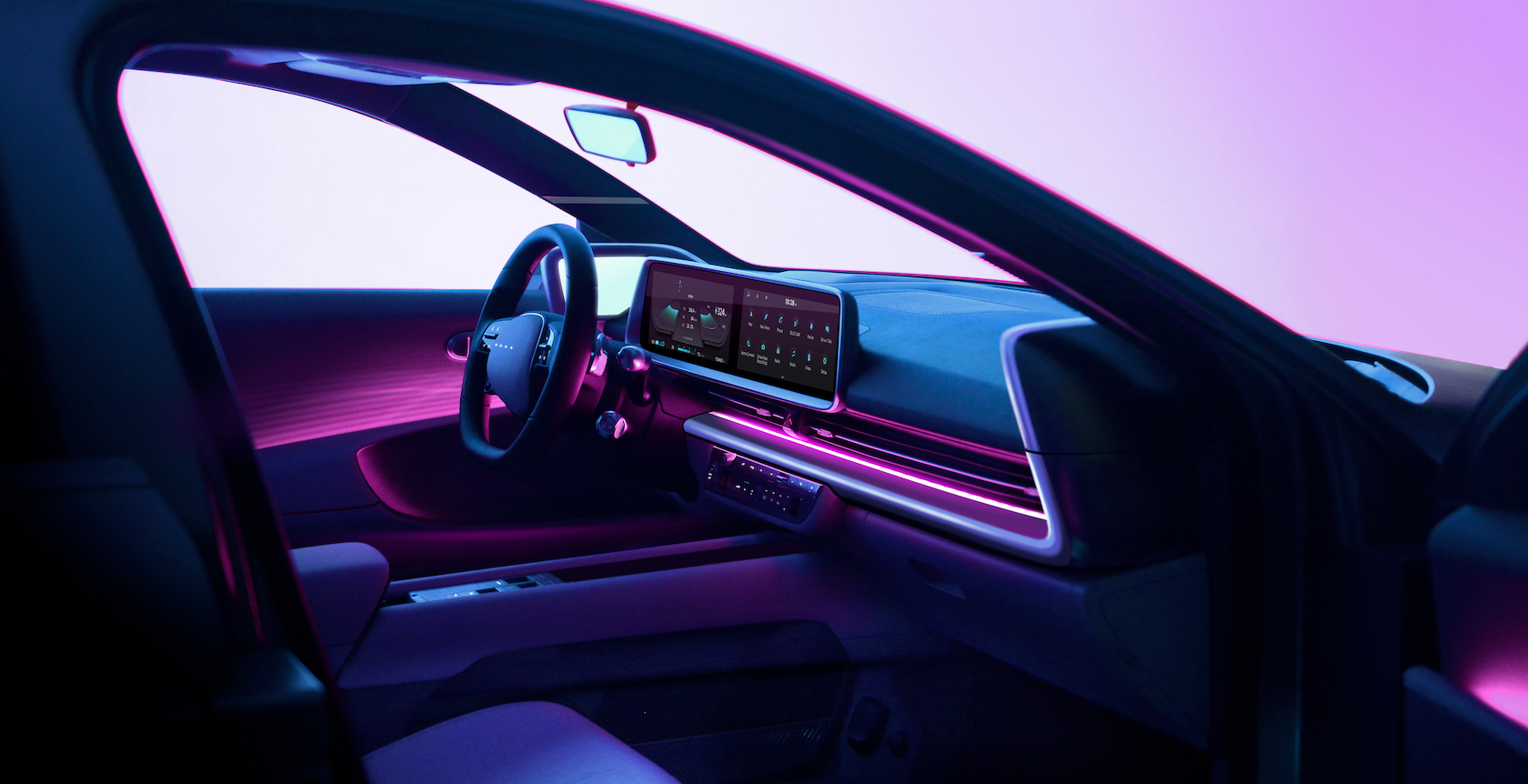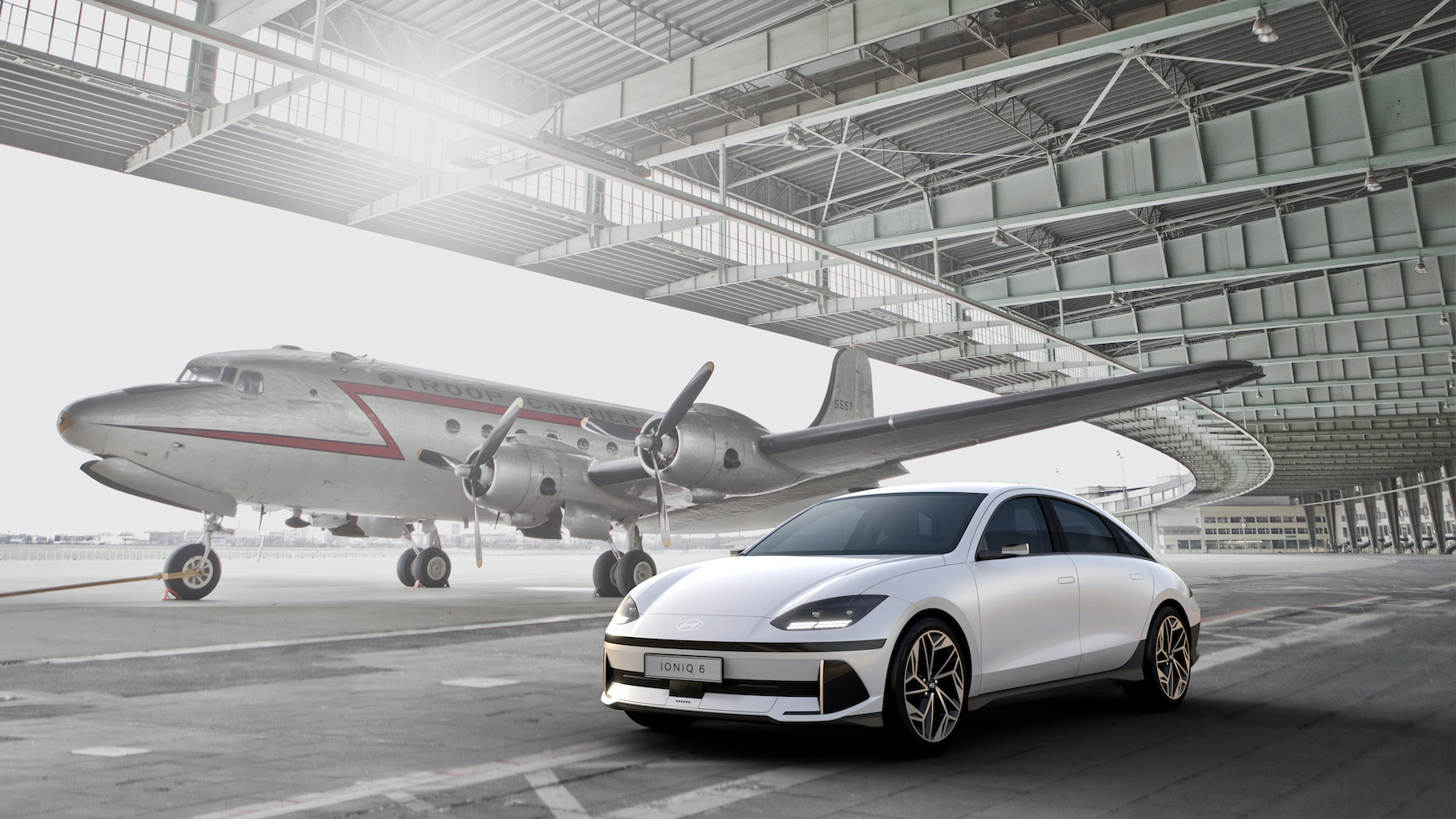
Hyundai Ioniq 6, the design
Just yesterday we told you about the series of teaser trailers published on Instagram in the last few days, and today, June 29th, Hyundai unveiled the definitive design of the highly anticipated Hyundai Ioniq 6, the 100% electric coupe that joins the Ioniq range after a long work of design to make the car as aerodynamic and efficient as possible.Originally known as 'Prophecy' when still in the concept stage, the Ioniq 6 is designed with lines simple and clean, sleek, designed to improve the energy efficiency of the car and therefore autonomy.
Hyundai Ioniq 6 was built on the E-GMP platform, the same as Ioniq 5, but the bodywork is radically different from the model we had the pleasure of testing a few months ago: this time we have a drag coefficient very low aerodynamics, of just 0.21, thanks to a series of deflectors, a low front end and very thin wheel arches that reduce air turbulence.
The bodywork is then further embellished with new generation optical groups, LED bars and the light signature that we have already seen on the other Ioniq, called Parametrix Pixel.
A lot of information is still missing techniques on the heart of Hyundai Ioniq 6: the Korean house has already confirmed that it will talk about it more in depth in July, and for the moment we enjoy the aesthetic part of this long-awaited as original and interesting electric.
Hyundai reveals the IONIQ 6 EV sedan, the eagerly-anticipated follow-up to its IONIQ 5
Hyundai previewed the IONIQ 6 sedan Wednesday, the heavily-anticipated followup to the brand’s popular first battery-electric model, the IONIQ 5 SUV.
The automaker won’t announce details such as the IONIQ 6’s price range, and production run size until the vehicle’s world premiere in July.
The South Korea automaker that staked its reputation over the past few decades on affordable, entry-level gas-engine cars performed an about-face this year, reallocating investments and resources to position itself as a top global brand for EVs before sales worldwide begin to surge.
So far, the plan to infuse IONIQ models with cachet and desire is working. The first model from Hyundai’s IONIQ sub-brand, the Hyundai IONIQ 5 SUV, swept the World Car Awards at this year’s New York International Auto Show thanks to its sleek looks, performance, and futuristic interior. A similar excitement appears to be growing around the forthcoming Hyundai IONIQ 6.
Like the Hyundai IONIQ 5 SUV, the IONIQ 6 displays aerodynamic sculpting and interior trim made from sustainable materials. Hyundai designers sought to create a customized, cocoon-like cabin with new lighting features and more screens.

Hyundai IONIQ 6 interior
The transition has meant re-allocating Hyundai’s investment dollars, resources, and existing infrastructure to leverage its new bread and butter. That includes investing more than $10 billion toward accelerating electrification and autonomous vehicle technology in the U.S. by 2025. $5.5 billion is earmarked for its new EV plant and battery manufacturing facility in Georgia, which is expected to produce at least some of the 23 battery-electric nameplates Hyundai plans to offer by 2025.
The company said the IONIQ 6’s single-curved aerodynamic profile and carefully crafted contours create Hyundai’s lowest drag coefficient of 0.21.
“IONIQ 6 connects an emotional convergence of functionality with aesthetics,” SangYup Lee, Executive Vice President and Head of Hyundai Design Center, said in a statement. “We have created the IONIQ 6 as a mindful cocoon that offers a personalized place for all.”
Hyundai, which leads the automotive industry in creating the most partnerships with suppliers and technology providers, has made a successful transition from budget-oriented gas-engine cars to premium EVs.

Image Credits: Hyundai
Hyundai’s capital investment in the Peach State represents the largest economic development deal recruited by Georgia, officials said. Hyundai’s plans call for creating just over 8,000 jobs at the 2,293-acre site.
The additional capacity will support Hyundai’s ambitious goal to become a top-three EV provider in the U.S. by 2026. Its battery manufacturing facility will help Hyundai establish a stable supply chain.
Hyundai was not immediately available for comment Wednesday morning.